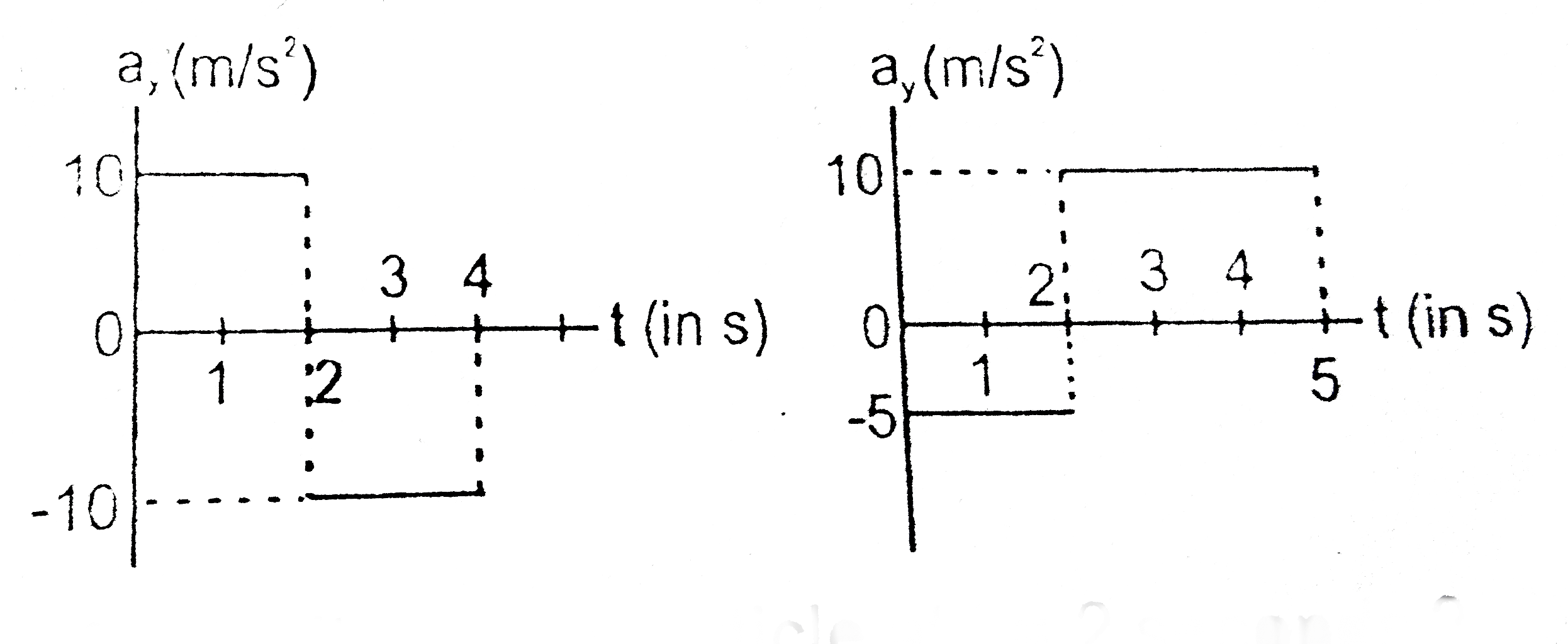A particle which is initially at rest at the origin, is subjection to an acceleration with x− and y− components as shown. After time t=5 , the particle has no acceleration.

What is the magnitude of velocity of the particle at t=2 seconds ?
A
10√5m/s
B
5√10m/s
C
5√5m/s
D
None of these
Video Solution
Text Solution
The correct Answer is:A
At,t=2sec(t=2sec)
vx=ux+axt=0+10×2=20m/s
vy=uy+ayt=0−5×2=−10m/s
v=√v2x+v2y=√(20)2+(−10)2=10√5m/s
From t=0,t=4sec
x[12(10)(2)2](0→2)+[(10×2)2−12(10)(2)2](2→4)
x=40m
y=[−125(2)2](0→2)−[(10)(2)−12(10)(2)2](2→4)
y=−10m
Hence , average velcoity of particle between t=0 to t=4sec is
vav=ΔxΔt=√(40)2+(−10)24
vav=52√17m/s
At,t=2sec,u=10×2=20ms
After t=2sec
v=u+at
0=20−10t
t=2sec.
Hence, at t=4 . the particle is at its farthest distance from the y−axis.
The particle is at farthest distance from y− axis at t≥4. Hence the available correct choice is t=4.
|
Similar Questions
Knowledge Check
A particle which is initially at rest at the origin, is subjection to an acceleration with x− and y− components as shown. After time t=5 , the particle has no acceleration.

What is the magnitude of average velocity of the particle between t=0 and t=4 seconds ?A52√13m/sB52√17m/sC30m/sDNone of theseA particle which is initially at rest at the origin, is subjection to an acceleration with x− and y− components as shown. After time t=5 , the particle has no acceleration.

When is the particle at its farthest distance from the y− axis ?A3sec.B2sec.C4sec.D1sec.Starting from rest, acceleration of a particle is a=2t(t−1). The velocity of the particle at t=5s is
AAt t=2s, the position of the particle is at x=9mBParticle acceleration at t=2s is 1m/s2CParticle acceleration is 1/2m/s2 through out the motionDParticle will never go in negative direction from it's starting position
Starting from rest, the acceleration of a particle is a=2(t-1). The velocity of the particle at t=5s is :-
View SolutionA particle starts from rest at t=0 and moves in a straight line with an acceleration as shown below. The velocity of the particle at t=3 s is

View SolutionA particle has initial velocity (2ˆi+3ˆj) and acceleration (0.3ˆi+0.2ˆj). The magnitude of velocity after 10 second will be
View SolutionThe initial velocity given to a particle is u and accelration is given by a=at32 . What will be the velocity of particle after time t.
View SolutionA particle starts from rest at t=0 and moves in a straight line with an acceleration as shown below. The velocity of the particle at t=3 s is

View Solution

